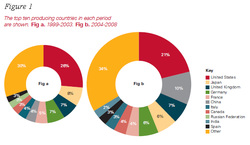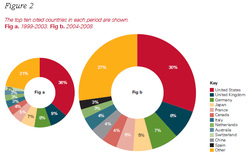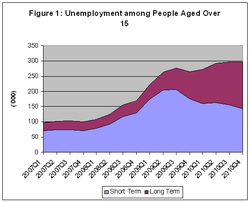However, we must ask the question where is this export growth coming from? Is it sustainable? And can it drive an economic recovery? Worryingly, analysing the figures at the sectoral level would raise serious concerns. The main exporting sectors in the Irish economy in 2010 were medical and pharmaceutical products (which accounted for 28% of our exports), organic chemicals (which accounted for 23% of our exports) and computer equipment (which accounted for 5% of our exports). These three sectors account for 56% of Irish exports and are mainly comprised of multinational companies.
Looking in closer detail at these sectors the exports of computer equipment are actually down 60% from last year. A substantial part of this dramatic decrease is likely the result of the withdrawal of equipment manufacturing from Ireland by Dell in Limerick. This may have had a substantial impact on this sector, as exports have fallen from over €10 billion in 2009 to just over €5 billion in 2010. This could act as a worrying omen of things to come.
As a small open economy, with a low corporate tax rate and access to the European single market, Ireland is ideally positioned to reap the benefits of acting as an export base for multinational companies accessing the European market. However, as was observed in the Dell case, these multinational companies can transplant their operations should a more attractive location become available and the withdrawal of these multinational firms can have a substantial impact on Ireland’s exports. Should some of the larger medical, pharmaceutical or organic chemical companies in Ireland move their operations elsewhere this could have a dramatic negative effect on Ireland’s export sector. The reliance of Ireland on multinational exports and the ability of these companies to move their operations raises serious concerns as to the sustainability of Ireland’s export performance and whether it can in fact drive an economic recovery.




 RSS Feed
RSS Feed
